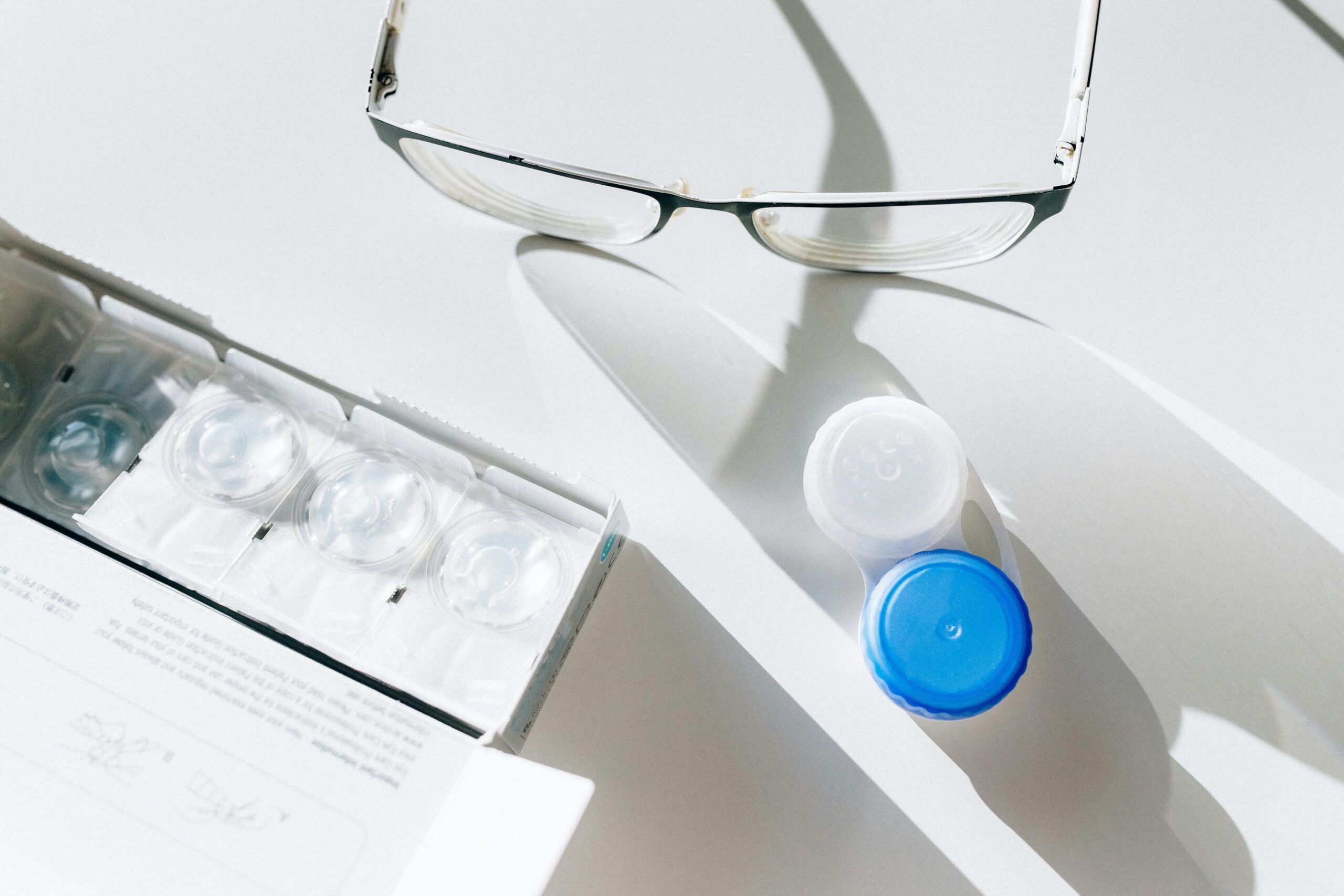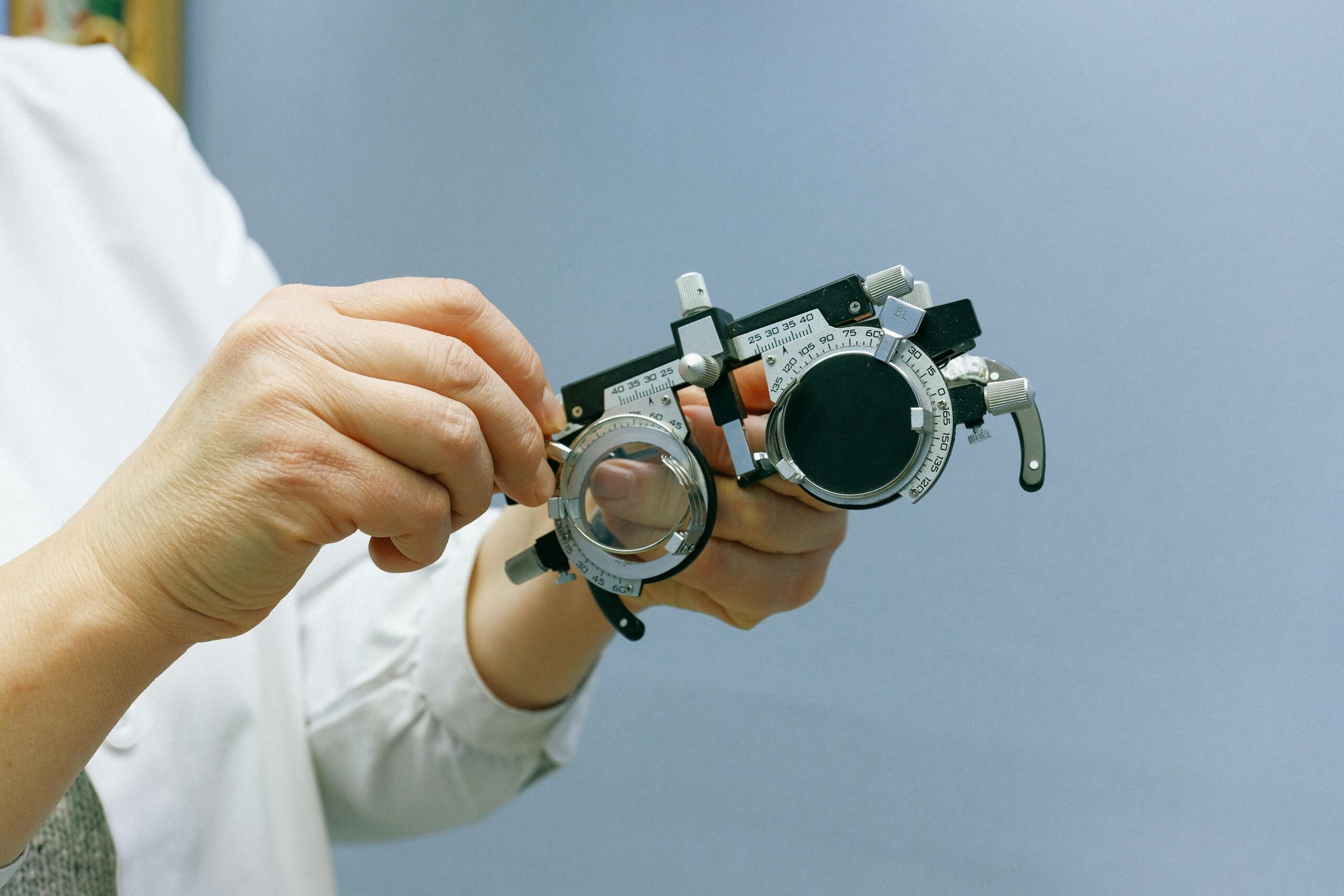Contact lenses offer a convenient and effective way to correct vision, providing an alternative to glasses. However, like any medical device, they come with potential risks and complications if not used properly. Understanding these risks can help you take steps to prevent problems and maintain healthy eyes while wearing contact lenses.
Common Contact Lens Complications
- Dry Eyes:
- What It Is: Wearing contact lenses can reduce the amount of oxygen that reaches the cornea, leading to dry eyes. This is especially common in people who wear lenses for extended periods or in dry environments.
- Symptoms: Redness, itching, burning sensation, and a feeling of grittiness in the eyes.
- Prevention/Treatment: Use rewetting drops or artificial tears, take breaks from wearing lenses, and ensure proper hydration.
- Corneal Abrasion:
- What It Is: A corneal abrasion is a scratch or scrape on the surface of the cornea. It can occur if a contact lens is damaged, inserted or removed improperly, or if debris gets trapped under the lens.
- Symptoms: Pain, redness, tearing, sensitivity to light, and the sensation of having something in the eye.
- Prevention/Treatment: Always handle lenses with clean hands, avoid wearing damaged lenses, and seek prompt medical attention if you suspect a corneal abrasion.
- Keratitis (Corneal Infection):
- What It Is: Keratitis is an infection of the cornea that can be caused by bacteria, viruses, fungi, or parasites. It’s one of the most serious contact lens complications and can lead to vision loss if not treated promptly.
- Symptoms: Severe pain, redness, blurred vision, discharge, and sensitivity to light.
- Prevention/Treatment: Follow proper lens hygiene, avoid sleeping in lenses unless prescribed, and replace lenses and cases as recommended. Seek immediate medical attention if symptoms of keratitis develop.
- Giant Papillary Conjunctivitis (GPC):
- What It Is: GPC is an inflammatory condition where small, raised bumps (papillae) form on the inner surface of the eyelids. It’s often caused by a reaction to contact lenses or protein deposits on the lenses.
- Symptoms: Itching, redness, mucus discharge, and the sensation that the lenses are moving out of place.
- Prevention/Treatment: Use daily disposable lenses or ensure thorough cleaning of reusable lenses. Switch to a different type of lens material or solution if recommended by your eye care provider.
- Contact Lens-Induced Red Eye (CLARE):
- What It Is: CLARE is an inflammatory response to hypoxia (lack of oxygen) and bacterial toxins that can occur with extended or overnight wear of contact lenses.
- Symptoms: Sudden redness, discomfort, tearing, and sensitivity to light, typically upon waking.
- Prevention/Treatment: Avoid overnight wear unless prescribed, use lenses with high oxygen permeability, and consider switching to a daily disposable lens.
- Corneal Neovascularization:
- What It Is: This condition occurs when new blood vessels grow into the cornea, often in response to long-term oxygen deprivation caused by contact lens wear.
- Symptoms: Reduced vision and visible blood vessels in the cornea.
- Prevention/Treatment: Reduce wear time, switch to lenses with higher oxygen permeability, and ensure regular check-ups with your eye care provider.
- Allergic Reactions:
- What It Is: Some contact lens wearers may experience allergic reactions to lens cleaning solutions, preservatives, or the lenses themselves.
- Symptoms: Itching, redness, swelling, and discomfort.
- Prevention/Treatment: Switch to preservative-free solutions or daily disposable lenses, and consult with your eye care provider to find the most suitable products.
- Contact Lens Overwear Syndrome:
- What It Is: This condition occurs when lenses are worn for too long without proper breaks, leading to a range of symptoms due to corneal hypoxia.
- Symptoms: Redness, discomfort, blurred vision, and sensitivity to light.
- Prevention/Treatment: Follow the recommended wear schedule, ensure your lenses are designed for extended wear if you plan to wear them for long periods, and give your eyes regular breaks.
- Corneal Edema:
- What It Is: Corneal edema is the swelling of the cornea due to fluid accumulation, often caused by insufficient oxygen reaching the cornea during contact lens wear.
- Symptoms: Blurred or foggy vision, halos around lights, and discomfort.
- Prevention/Treatment: Use lenses with high oxygen permeability, reduce wear time, and avoid overnight wear unless prescribed.
- Acanthamoeba Keratitis:
- What It Is: A rare but severe infection caused by the Acanthamoeba parasite, often associated with improper contact lens hygiene, such as using tap water to clean lenses or swimming with lenses in.
- Symptoms: Severe pain, redness, blurred vision, and sensitivity to light. The condition can lead to vision loss if not treated promptly.
- Prevention/Treatment: Never use tap water for lens care, avoid swimming or showering with lenses in, and seek immediate medical attention if symptoms occur.
Preventing Contact Lens Complications
While contact lens complications can be serious, they are often preventable with proper care and hygiene:
- Wash Hands Thoroughly: Always wash your hands with soap and water before handling contact lenses to prevent contamination.
- Follow Cleaning Instructions: Use the recommended cleaning solutions, avoid using tap water, and replace your lens case every three months.
- Adhere to Wearing Schedules: Stick to the wearing schedule prescribed by your eye care provider, and avoid wearing lenses longer than recommended.
- Regular Eye Exams: Schedule regular eye exams to monitor your eye health and ensure your lenses are fitting properly.
- Replace Lenses as Directed: Follow the replacement schedule for your lenses, whether they are daily, bi-weekly, or monthly disposables.
- Avoid Sleeping in Lenses: Unless your lenses are specifically designed for overnight wear, remove them before sleeping.
- Avoid Swimming with Lenses: Remove lenses before swimming to reduce the risk of contamination and infection.
- Be Aware of Symptoms: If you experience any symptoms of discomfort, redness, or changes in vision, remove your lenses and consult an eye care professional immediately.
Conclusion
Contact lenses are a safe and effective way to correct vision when used properly. By understanding the potential complications and following recommended guidelines, you can minimize the risks and enjoy the benefits of clear vision. Always consult with your eye care provider if you have any concerns about your contact lenses or eye health.
For more info, download our detailed brochure here.



